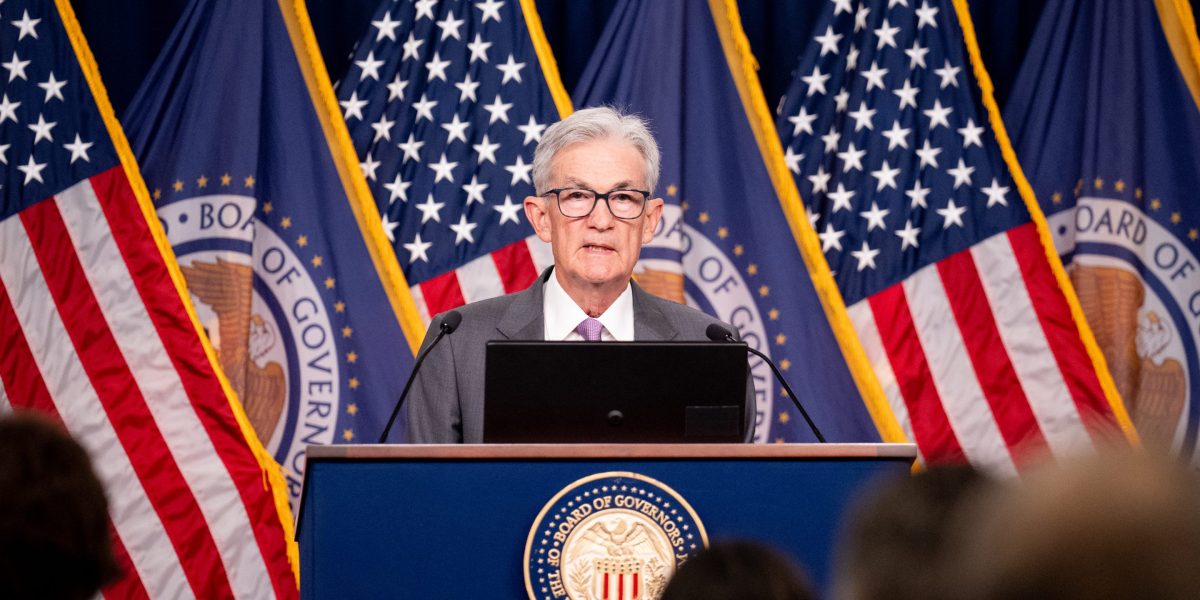
The table is set, the agenda prepared. Tomorrow afternoon Federal Reserve chair Jerome Powell will hold a press conference following the central bank’s Federal Open Market Committee (FOMC) meeting, and reveal whether the group has decided to lower the base interest rate.
It would be the first time in more than four years that Powell will have made such an announcement, with the group previously voting to continually hike or hold the interest rate to wrestle inflation under control.
But hawks and doves alike on the FOMC are growing increasingly mindful of the fact they have two parts to their mandate.
The first is indeed to push inflation to a target rate of 2%. The second—and until now less problematic—task is to maximize employment.
Now, shaky jobs reports from this summer have the Fed looking to rebalance the scales. A reduction in the base rate—although potentially inflationary by making borrowing and spending more attractive—supports economic activity, and jobs as a result.
Wall Street has been pricing a reduction to the base rate—currently at a more than two decade high—for months.
But questions are still rife about the amount Powell and his peers will cut by, how quickly the FOMC will continue to normalize the base rate, and whether the FOMC can declare the victory of a soft landing once and for all.
To cut 25bps or 50bps?
The Street is convinced it will be getting its much-anticipated cut tomorrow, despite warnings from the Fed that it is not their job to appease the markets.
Analysts are taking their cues from the shifting stance expressed by FOMC members, with the likes of Chicago Fed president Austin Goolsbee telling Fortune in August he is questioning when the Fed needs to have such a firm grip on monetary policy.
“The answer is you only want to be that tight for as long as you have to and if you’re afraid that the economy is about to overheat,” he explained. “This, to me, is not what an overheating economy looks like.“
The general consensus is that the cut will be of 25 basis points (bps), though there is some speculation the Fed may begin with a 50bps cut.
Markets are currently placing the odds at 50/50 wrote David Doyle, head of economics at Macquarie, in a note yesterday seen by Fortune.
But Doyle added: “While a larger size cut is possible, our baseline is for a 25 bps cut at this meeting and 200 bps in total over the coming year.”
JPMorgan economists are among those expecting a larger cut, writing today in a note they expect a 50bps first move.
Experts have warned that a 50bps cut could spook markets, who might attribute a larger-than-expected cut to looming turbulence in the economy that the Fed is trying to outmaneuver.
What could prompt a bigger cut?
The likes of Macquerie’s Thierry Wizman, global FX and rates strategist, said the only justification for a 50bps cut would be a financial crisis in the days before the FOMC meeting. With less than 24 hours to go, this seems unlikely.
But not everyone agrees—famed economist Claudia Sahm chief among them.
Sahm is best known for the creation of her eponymous recession indicator, which signals the start of a recession if the three-month moving average of the national unemployment rate rises by 0.50 percentage points (pp) or more, relative to the minimum of the three-month averages from the previous 12 months.
The Sahm Rule has effectively signaled economic downturns in the past and currently sits at 0.57pp—above the threshold.
In a blog post published yesterday Sahm pushed the case for a 50pbs cut, highlighting that “progress on inflation alone justifies the start of the Fed’s easing cycle and gets us the first 25 basis points.”
The second 25 points are justified by labor market conditions, Sahm adds, which are cooling at a faster rate than expected.
“The labor market has not held strong,” Sahm wrote. “The disappointing labor market data since the July FOMC meeting should add another 25 basis points to the cut.”
Will there be further cuts?
The market seems comfortable with a 25bps cut with more to come, writes Wharton professor Jeremy Siegel.
The senior economist to investment specialists WisdomTree wrote in his weekly commentary for the platform that he expects a further seven rate cuts in a row up until June next year.
Siegel has been an advocate for the Fed moving sooner rather than later, even pushing for an emergency rate cut after August’s damp jobs report.
But he wrote this week that the easing bodes well for markets: “On a broader scale, the equity markets have remained resilient, particularly favoring value and dividend-paying stocks this quarter. This inclination may gain momentum as the Fed begins to implement rate cuts, enhancing the attractiveness of these equities relative to bonds.”

